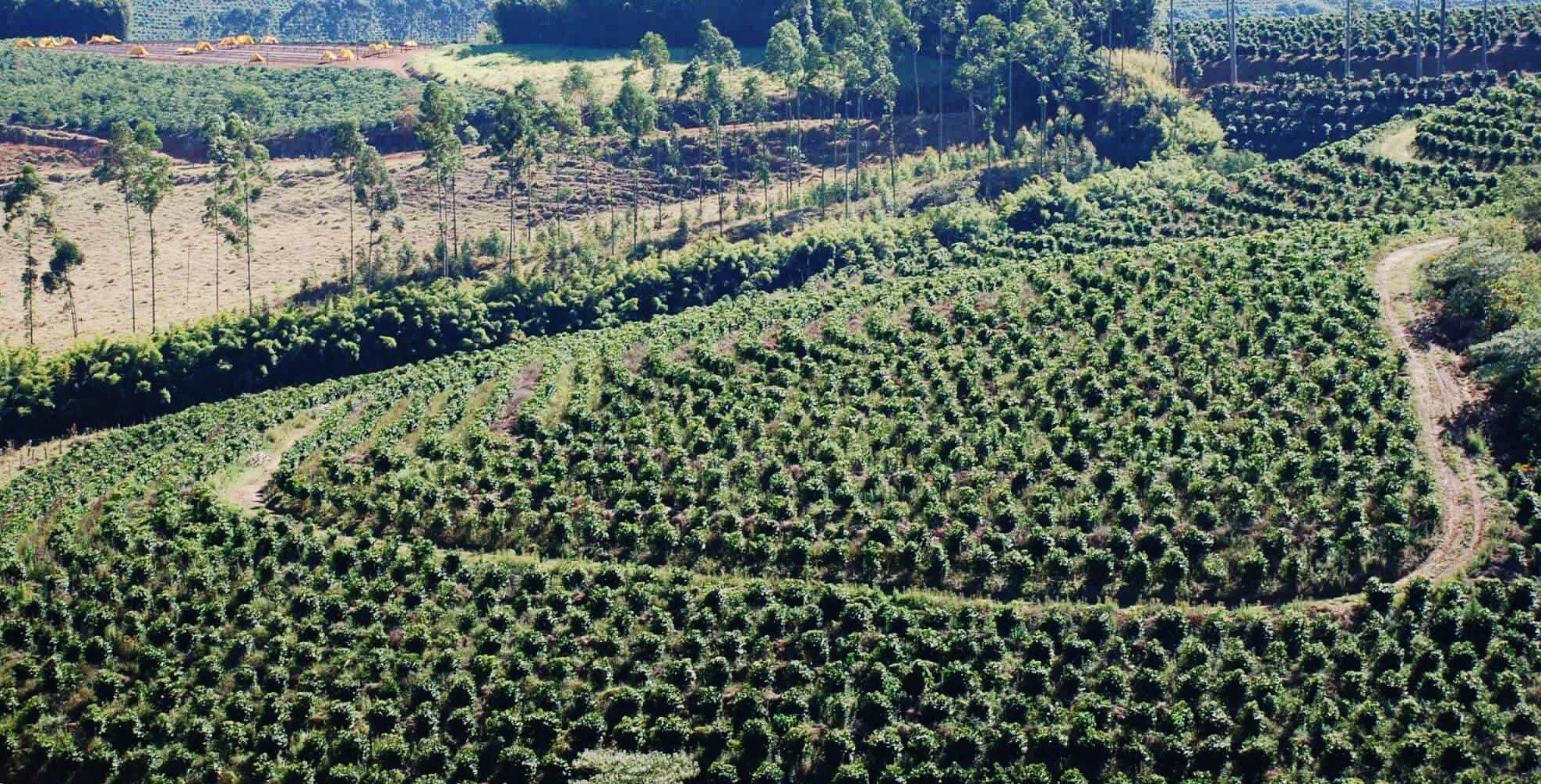The density of trees on a coffee farm can have a bearing on their performance, but planting them very close together is not as problematic as you might have thought. Most of the world’s coffee has been planted at a density of less than 2000 trees per hectare (DaMatta, 2004). This is close to the figure recommended in the USAID online training manual. They advise farmers to space trees at least 2.4 mm (8 ft) apart (1680 trees per hectare) so that one plant’s roots don’t cross over another’s. (Arabica coffee’s roots extend in a circle from the trunk in a diameter of only around 1.5 meters, or 5 feet. See Lesson 2.01.)
As you may recall from lesson 0.02, intensive farming incorporating heavy farm equipment like tractors and harvesters is common in Brazil. In large and relatively level plantations found in places like Minas Gerais, farmers can adjust their planting densities to allow for harvest and tractors to fit between the rows of trees. But most of the world’s coffee farmers operate without machinery and often in very hilly landscapes like Colombia and Yemen. For terroirs that can’t accommodate heavy machinery for picking, one solution is the planting of dwarf cultivars such as Caturra. Dwarf cultivars are common because they are easier to pick by hand. This together with benefits of mutual shade has seen planting densities come closer together. (DaMatta, 2004)
| Trees per hectare | Kilos per hectare | Grams per plant |
| 2,500 (two plants per hole) | 3,941 | 1,576 |
| 2,500 (one plant per hole) | 4,571 | 1,828 |
| 5,000 | 8,996 | 1,799 |
| 7,519 | 10,148 | 1,349 |
| 10,000 | 10,369 | 1,036 |
Tree-spacing statistics: Trees per hectare,
